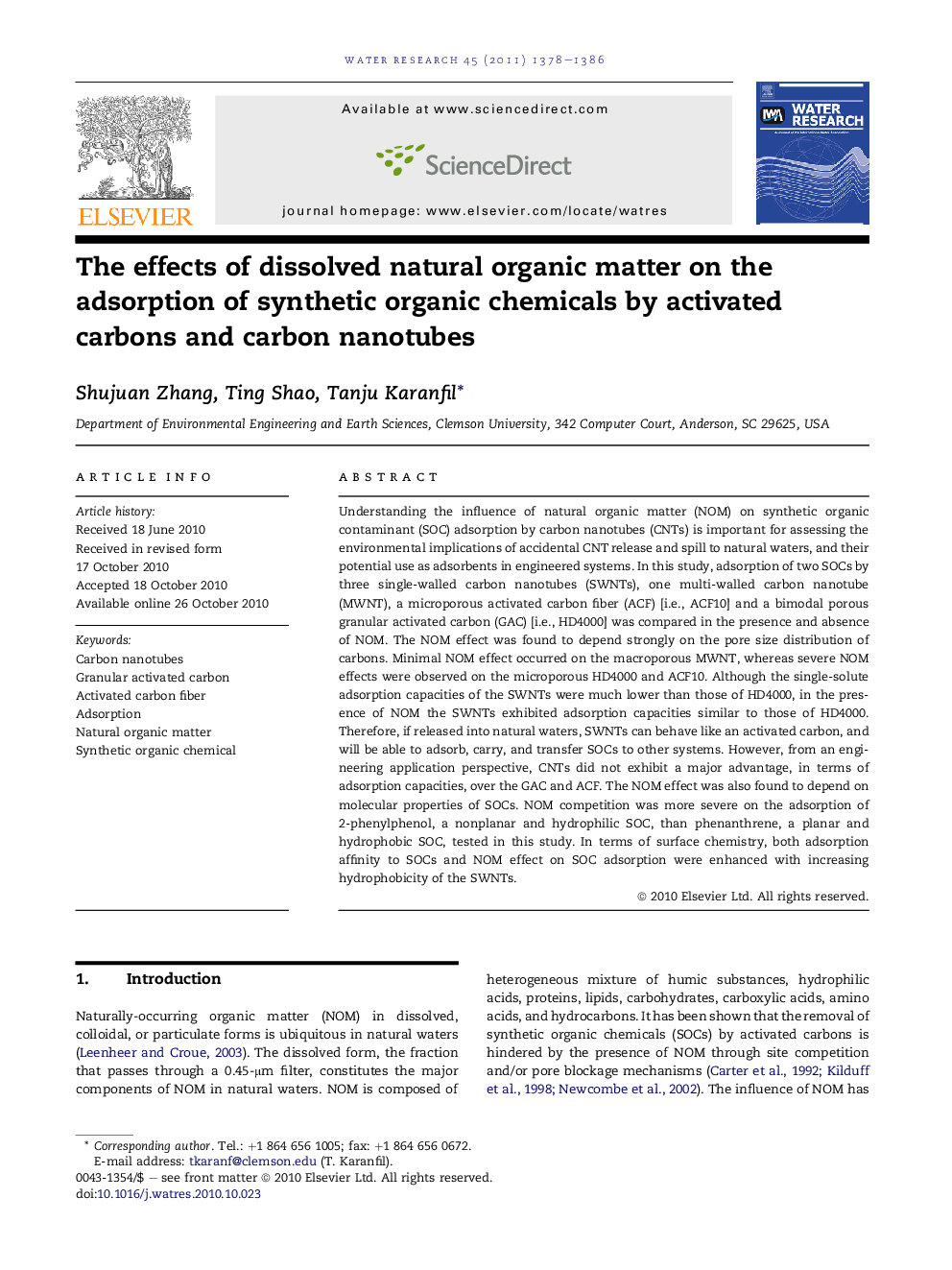| Article ID | Journal | Published Year | Pages | File Type |
|---|---|---|---|---|
| 6368124 | Water Research | 2011 | 9 Pages |
Abstract
Understanding the influence of natural organic matter (NOM) on synthetic organic contaminant (SOC) adsorption by carbon nanotubes (CNTs) is important for assessing the environmental implications of accidental CNT release and spill to natural waters, and their potential use as adsorbents in engineered systems. In this study, adsorption of two SOCs by three single-walled carbon nanotubes (SWNTs), one multi-walled carbon nanotube (MWNT), a microporous activated carbon fiber (ACF) [i.e., ACF10] and a bimodal porous granular activated carbon (GAC) [i.e., HD4000] was compared in the presence and absence of NOM. The NOM effect was found to depend strongly on the pore size distribution of carbons. Minimal NOM effect occurred on the macroporous MWNT, whereas severe NOM effects were observed on the microporous HD4000 and ACF10. Although the single-solute adsorption capacities of the SWNTs were much lower than those of HD4000, in the presence of NOM the SWNTs exhibited adsorption capacities similar to those of HD4000. Therefore, if released into natural waters, SWNTs can behave like an activated carbon, and will be able to adsorb, carry, and transfer SOCs to other systems. However, from an engineering application perspective, CNTs did not exhibit a major advantage, in terms of adsorption capacities, over the GAC and ACF. The NOM effect was also found to depend on molecular properties of SOCs. NOM competition was more severe on the adsorption of 2-phenylphenol, a nonplanar and hydrophilic SOC, than phenanthrene, a planar and hydrophobic SOC, tested in this study. In terms of surface chemistry, both adsorption affinity to SOCs and NOM effect on SOC adsorption were enhanced with increasing hydrophobicity of the SWNTs.
Keywords
Related Topics
Physical Sciences and Engineering
Earth and Planetary Sciences
Earth-Surface Processes
Authors
Shujuan Zhang, Ting Shao, Tanju Karanfil,
